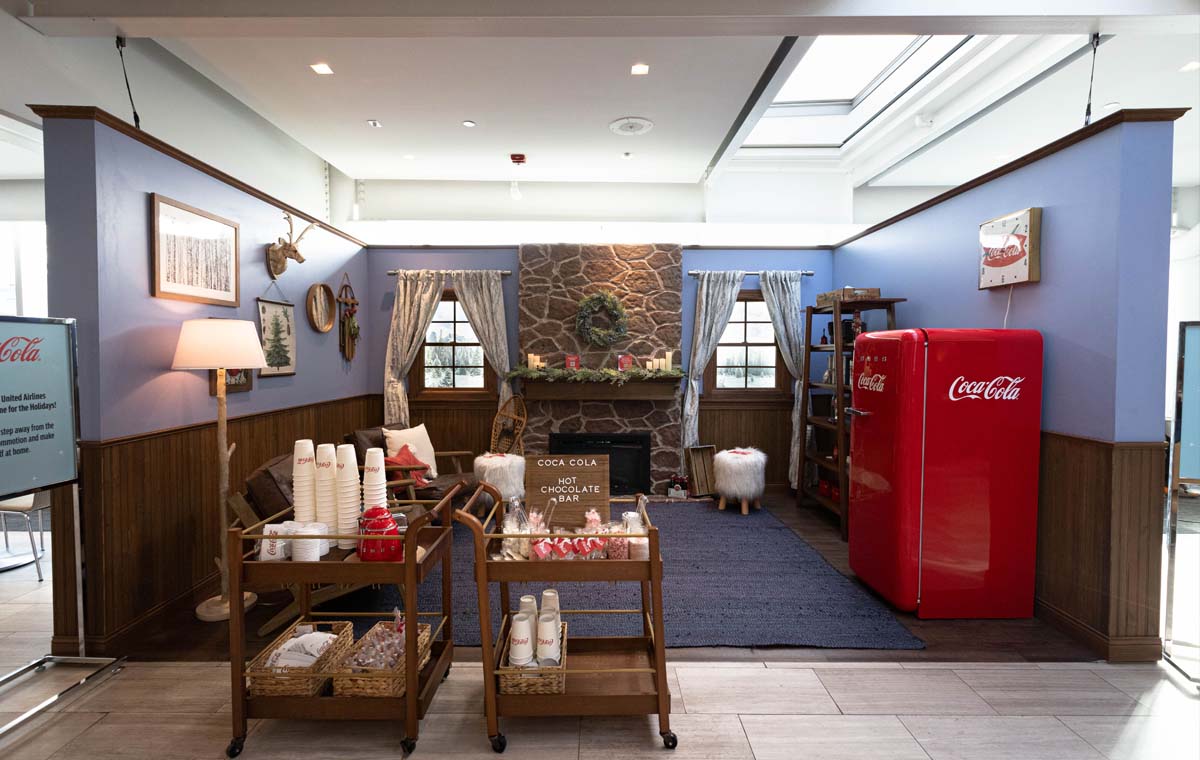Consumers are constantly bombarded with messages across various channels. They have an infinite number of options for entertainment without even leaving the house. For brands, it can feel impossible to capture their audience’s attention in a world full of so much noise. The most forward-thinking marketers understand that in today's distracted world, we must create extraordinary experiences that customers simply can’t get anywhere else.
Enter multi-sensory experiences. These immersive environments use different sensory modes – sight, sound, smell, touch, and even taste – to create deeper, more meaningful, and more memorable brand connections. From crafting digital and physical experiences to leveraging emerging technologies like augmented reality, brands have a wealth of innovative options to stimulate the senses and foster true emotional engagement. If strategically planned and seamlessly executed, a multi-sensory branding approach can lead to increased awareness, greater loyalty, and online and offline buzz that generates tons of attention for your brand.
What is a Multi-Sensory Experience?
A multi-sensory experience in the context of brands is a marketing strategy that engages more than just the visual and auditory senses often targeted in traditional advertising. It aims to create a memorable brand experience by appealing to a full spectrum of senses, including taste, touch, and smell, in addition to sight and hearing. By doing so, a multi-sensory experience can evoke more powerful emotions and create a nuanced perception of the brand. This holistic approach is designed to forge stronger and more profound connections with consumers, anchoring the brand narrative not only through visual imagery and sound but also through tactile interactions and even scents and flavors that resonate with the brand's essence. When consumers encounter a brand through multiple sensory touchpoints, the experience tends to be more impactful, leading to enhanced brand recall and loyalty.

What Makes Multi-Sensory Experiences Effective?
Studies have consistently shown that the more senses an experience engages, the more likely it is to be remembered. When a person can touch, taste, or smell something, these experiences can trigger emotional responses that are deeply ingrained and more readily recalled. For example, the scent of vanilla might evoke a memory of baking with a loved one, thereby creating a powerful associative link when that aroma is artfully integrated into a branding event.
Differentiation is another pivotal factor in making multi-sensory experiences stand out. In a crowded marketplace, brands that employ creative tactics to activate all senses can break through the noise, setting themselves apart from competitors using only visual or auditory stimuli. This uniqueness contributes to establishing a distinctive brand identity. For instance, when a company adds an interactive touchscreen wall that reacts to the consumer's movement, it not only offers something novel,but also potentially aligns with the brand's values of innovation and consumer interaction.
Moreover, the interactive nature of multi-sensory marketing makes it more engaging than traditional two-dimensional marketing, enticing consumers to participate actively rather than passively observing. This active engagement puts the consumer at the center of the brand's narrative, transforming them into a part of the story rather than mere spectators. It transforms brand messaging into a dynamic dialogue that invites consumers to immerse themselves in the brand’s world, thus fostering a more profound emotional connection. Immersive experiences created by VR technology, for example, can transport consumers to a world tailored by the brand, making the experience feel personal and memorable.
Finally, multi-sensory experiences connect with consumers on a deeper emotional level. Traditional advertising often appeals to logic or surface-level desires, but engaging multiple senses allows a brand to create more complex, emotional resonance with its audience. A multi-sensory approach can encapsulate the full breadth of a brand's values and stories – not just what they stand for, but how they feel to the consumer. Whether it's the calming touch of a product’s luxurious materials or the joy triggered by an interactive game incorporated into a campaign, these sensations foster an emotional bond between consumer and brand that can last long after the initial engagement has ended.
Multi-Sensory Experiences for Brands: 5 Tips for Engaging Experiences
Mapping the Sensory Journey
When planning a multi-sensory brand experience, it’s crucial to meticulously map out the sensory journey to ensure it aligns with the story the brand wants to tell. This planning process involves identifying what emotions or reactions the brand wishes to evoke and at which touchpoints these should occur. The journey should be structured to build progressively, using cues and triggers to deepen engagement as the experience unfolds. For instance, a brand can begin with gentle auditory stimuli that lead to an area where tactile interactions are encouraged, thus guiding the consumer through a carefully crafted sensory narrative that mirrors the brand's overarching story.
Harnessing Technology for Enhanced Interactivity
Technological advancements such as AR and VR are revolutionizing the way brands interact with consumers, allowing for a richer sensory environment that can be both controlled and personalized. Soundscapes can be used to transport consumers to another place or time, enhancing the feeling of immersion, while haptic feedback can make digital interactions feel more real and tangible. When implemented thoughtfully, technology enhances the sensory experience in a way that feels seamless and natural, creating memories tied to the brand's identity that feel personal and engaging.
Creative Use of Space and Environment
Designing pop-up experiences and installations that surprise and delight can generate buzz and enhance brand awareness significantly. These displays should be ingeniously designed not only to grab attention but also to resonate with the brand’s values and aesthetic. Pop-up environments allow for full creative control over the consumer’s physical surroundings, providing a rare opportunity to engage all five senses. Advice for brands includes ensuring temporary spaces offer experiences that are consistent with the established brand identity, thereby reinforcing the brand image with every encounter.
Integrating Scent
Scent is a potent trigger for memory and emotion, and incorporating scent marketing can invoke an immediate, visceral reaction that can help a brand stand out. This tactic requires selecting a fragrance that not only complements the brand but also evokes the intended psychological impact. For example, a crisp, citrus scent might be utilized to reflect a brand’s focus on cleanliness and vitality. Deploying this scent strategically throughout an experience can effectively imprint the brand essence in the consumer's memory, creating a lasting association between the scent and the brand. It’s vital to utilize scent with a light, natural touch, however. Faux scents can quickly overpower an experience and drive potential customers away if they are too strong.
Interactive Elements that Encourage Participation
In multi-sensory brand experiences, interactive elements serve as powerful tools for engagement and can increase the likelihood of social sharing. When consumers actively participate, they become more invested in the experience and more inclined to share it with others. By offering features that are unique, visually appealing, and enjoyable to interact with, brands can create 'Instagrammable' moments that consumers are excited to post on social media. This not only amplifies the reach of the campaign but also helps position the brand as a creator of enjoyable and share-worthy experiences. Case studies of successful interactive campaigns demonstrate the value of designing for participation, from simple tactile inputs to complex, immersive environments that encourage exploration and discovery.
Multi-Sensory Experiences Should Engage, Not Overstimulate
Think of creating a multi-sensory brand experience like cooking a fine meal. Too much of any one ingredient, or too little of another, and it won’t live up to its potential. The goal is to utilize the sense elements in a balanced way, taking into account the user experience. If every sensory element is overpowering, your message is going to get lost in the fray, and you’re likely to turn off customers. Instead, be thoughtful and intentional in your multi-sensory approach. After all, this technique is a tool to deliver a more immersive, holistic experience, not an end unto itself.
Final Thoughts on Multi-Sensory Experiences
In conclusion, amidst a barrage of marketing strategies clamoring for consumer attention, multi-sensory experiences emerge as a powerful differentiator. They not only cut through the noise but create meaningful, memorable encounters with customers. As we've seen, harnessing the senses forms emotional connections and memories that traditional methods cannot easily replicate, whether it's through scent-infused environments, immersive retail pop-ups, or the strategic use of interactive media.
Creating a multi-sensory experience can powerfully amplify brand awareness and loyalty because interactive sensory experiences stick with us. We recall them faster and remember them more vividly than an ad on a screen or an Instagram reel. Experiences attract attention and demand engagement but they also generate word of mouth and social media buzz. People don’t want to be left out. They want to participate. So why not give them a reason to engage?
If you’re looking to differentiate your brand with an immersive, multi-sensory experience, the first step is to find an experienced partner. Bridgewater Studio helps brands create one-of-a-kind experiences that engage the senses and create unforgettable moments for audiences. Discover how an end-to-end strategy, design, and production partner can help make your next event an unmitigated success by booking a no-obligation strategy session today.


.png)
.png)
.png)






